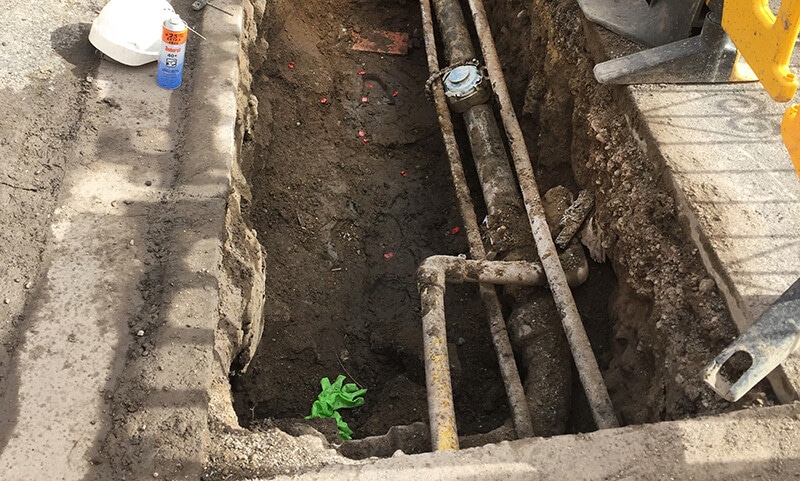In order to start any construction, it is important to understand the ground conditions. Essential factors like soil composition need to be determined, and these factors enable a decision to be made on whether it is feasible for the construction to go ahead. The simplest way to get the information needed is to excavate a trial hole, and it is considered the most cost-effective way to get the geotechnical site data needed.
What is a Trial Hole?
A trial hole is generally a pit excavated to a depth of up to 4 metres. They are usually dug by hand, although the larger ones may require a small digger or suction excavation and need to be at least a metre deep. A digger cannot be used if the ground has known underground gas pipes or electrical cabling, which is why vacuum excavation is often favoured. If the trial hole goes over 1.2 metres, structure protection to shore up the pit must be used, and of course, this is a particularly vital health and safety issue if you require people to enter the pit as a pit collapse of a 4-metre hole could be fatal. Not having to send people into a pit is the best bet, which is why hand digging is best for small pits, and vacuum excavation for larger holes, as you get all the data you require without risk to personnel.
What Is The Purpose of a Trial Hole?
A trial pit may be needed for many issues, including:
- trial holes for foundations to ensure they are suitable for extension works
- trial holes for utilities to gain an understanding of the soil conditions and water drainage
- trial holes for buried services to prevent cable strikes and other damage
- trial holes for soil testing, including from spoil heaps adjacent to the pit
Trial Pit Excavation Procedure
Deciding to dig a trial pit should be in consultation with a structural engineer and should not be attempted by someone without the necessary qualification.
A method statement for trial holes is a vital document that must be prepared in advance of the trial hole works. It defines the purpose of the hole and clearly states what needs to be established and why the pits are needed.
The limitations of trial pits are generally few and far between, but it is fair to say they cannot reach the same depths as a borehole. They can also disrupt the surface significantly and be hard to correctly fill when the site investigation is finished. However, it is still a popular method and recommended for many construction purposes.
Advantages of Trial Pits
Minimises Damage
A trial pit can help you establish what buried obstructions might lay under the ground and therefore enable you to mitigate the risk and avoid damaging anything that you may later regret. Cable strikes are both time and cost-heavy and really not something you want to get involved in no matter what construction project you are involved in.
Cost Effective
A trial hole is an easy and practical way to investigate a site. This is because there is normally no heavy machinery required, which limits transport and fuel costs, and it can usually be completed in one day, unlike sonic drilling and window sampling.
Increases the Safety of the Project
With the information gathered from soil samples and collecting data from soak away tests, the safety of the ground can be determined. It will alert you to any contamination issues or anything that might need further investigations before work continues. Issues that could put your workforce at risk if they were not discovered before work commenced.
Helps Determine the Construction Materials
For example, if you are building an extension, the existing foundations need to be checked to ensure that they are strong enough to cope with the additional structure. It also gives you a chance to get a better idea of work timings and budget as there is a massive difference between, say, 900 mm deep foundations and those of 2.5 m deep. Not only will it change the timeline of your project, but it could easily require different qualities of materials.
What is the average depth of the trial holes?
The average depth of a trial hole is anywhere from one metre to 4 metres deep. If you reach a depth of 1.2 metres, you need to bring in structural measures to prevent collapse and to protect people who need to enter the pits.
A trial hole or pit is a vital part of any construction project. However, it is important that it is carried out by experienced professionals. Even if you intend to carry out construction yourself, this is a vital job that requires experience. The benefits of trial pits are clear to see, and it is the most cost-effective way of getting the information needed as they are usually dug by hand. They are cheaper than boreholes and can often be completed within a day, ensuring results can be processed as quickly as possible.
Contact Pier UK Ltd
To learn more about the trial hole excavation services, why not contact our team today? They are happy to answer any questions you might have and are waiting to take your call.


